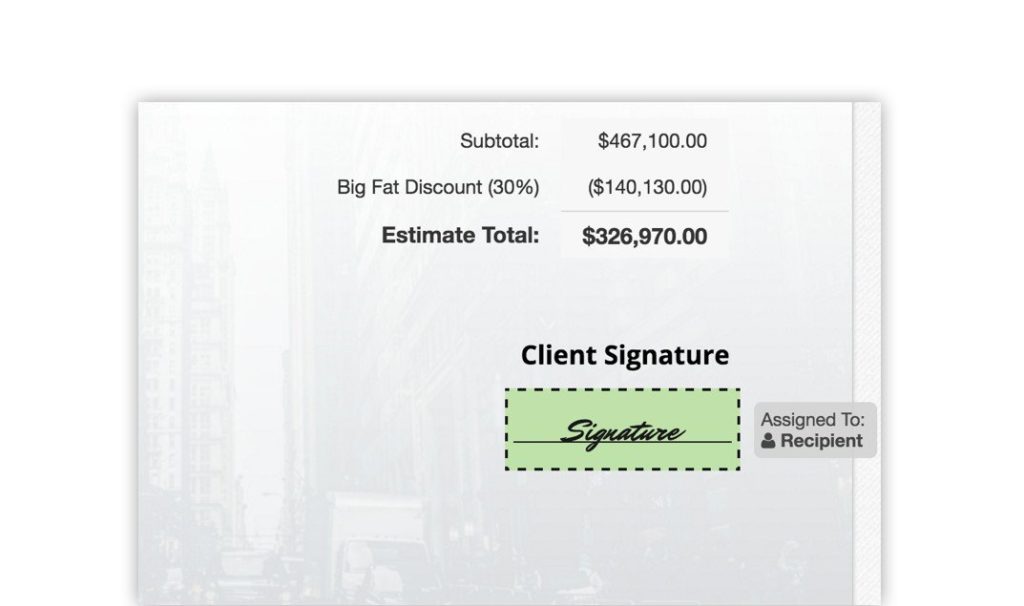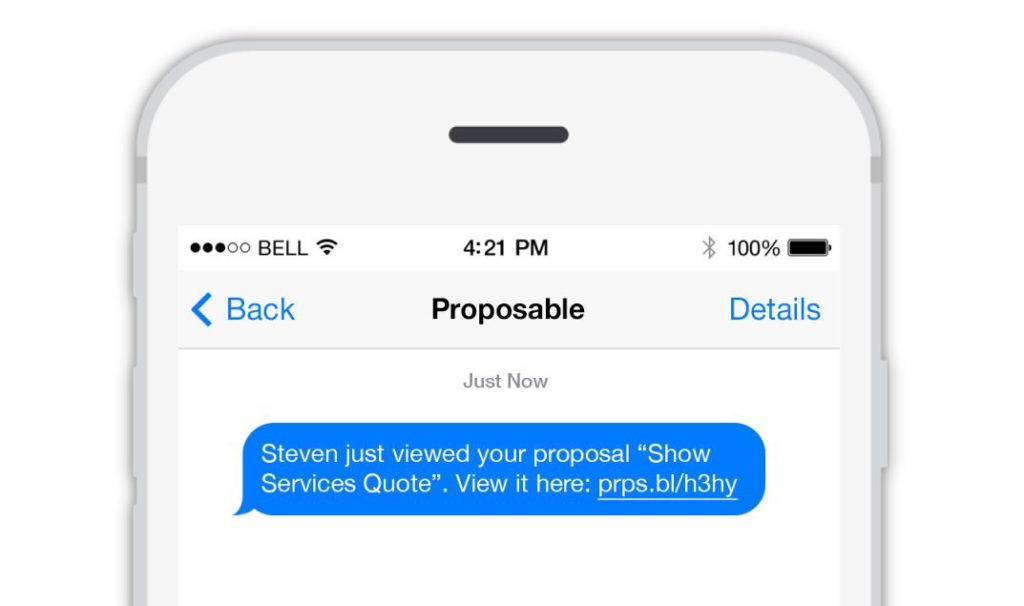1. Integrate E-Signatures Into your Proposals
Is there anything more frustrating than finally closing a deal and then waiting for days for the signed proposals to be returned? Time seems to stand still when it comes to contract execution. The good news is that there is no need to wait on old-fashioned pen and ink signatures any longer. E-signatures have changed the game. They are legally binding, globally-recognized, and versatile enough to be used for virtually any contract or proposal.
By implementing e-signature fields inside your proposals, you can easily collect signatures from your client in each location within the document that you need them to sign, and immediately add countersignatures. It saves time for both you and the client by requesting all signatures at once, specifying who can sign the document and enabling clients to sign and return documents in seconds– not days or weeks.
As an added benefit, e-signatures further reduce the waste of time and paper by preserving an electronic copy that doesn’t need to be printed, copied or faxed. Don’t waste time waiting for the ink to dry. Built-in e-signatures seal the deal quickly and efficiently–at the moment your client is ready to purchase.
2. Spy On Your Proposals
Wouldn’t it be great to be a fly on the wall to gauge the reaction of clients when they review your documents? Proposal analytics make that inside-scoop a reality, giving you valuable insight into delays in the sales cycle. For example, if it has been a week and your client hasn’t even opened your proposal, you may want to ensure they received it. If they have opened your proposal, analytics will show you which sections they spent the most time reading and how much time they spent reviewing the document overall.
Seeing client behaviors and activities gives you the information you need to craft the right follow-up messages and “gentle nudges” to spur the actions you want your client to take. And over time, you can track which sections of your proposals resonate well with clients and which are falling flat so that you can take make the right adjustments.
3. Set Up Notifications
Coupled with proposal analytics, real-time notifications offer a powerful one-two punch for a shorter sales cycle. While the analytics engine gathers the data, real-time text and email notifications send details about where the client is in the process. These customizable notifications instantly alert sales teams when a proposal is viewed, downloaded, signed and more. Sales teams can concentrate on other deals and activities knowing that they’ll be alerted immediately when a prospect takes action on a proposal.
4. Keep the Conversation Inside Your Proposal
Communication is key when it comes to streamlining the sales cycle. Integrated messaging and collaboration inside your proposal makes it simple for your team to communicate with both the prospect and internal teams. With the ability to flag notes as internal-only or public to all recipients, your team will have a complete conversation history and can quickly address potential roadblocks as they emerge. It preserves a record of what was promised and communicated by both parties, leading to faster, more effective communication and a shorter sales cycle.
The right technology can make a huge impact on the length of your sales cycle. As you work to optimize your processes, use analytics, real-time insights and collaboration to create a better experience for your clients and your sales teams.
Great Suggestions, Now What?
If you’re ready to shorten your sales cycle with these great tools and more, you can sign up for a Free Trial of Proposable, or schedule a personalized Proposal Consultation Here.





